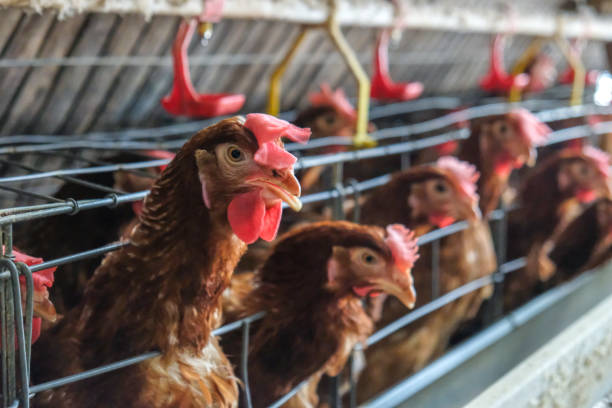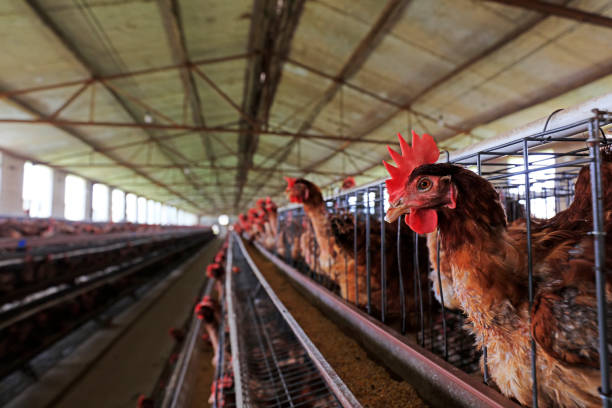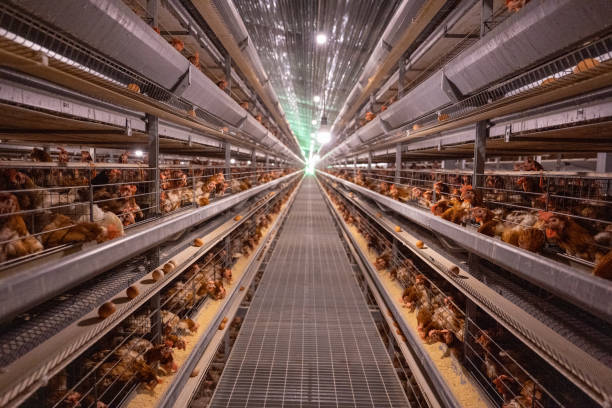
Comprehensive Guide: Poultry Farm Design and Construction in Africa
Comprehensive Guide: Poultry Farm Design and Construction in Africa

Poultry farming in Africa is rapidly evolving, driven by increasing demand for poultry products and a growing awareness of the economic opportunities it presents. However, successfully establishing and operating a poultry farm requires careful planning and execution, starting with a well-thought-out design and construction process. This comprehensive guide provides essential insights into poultry farm design and construction in the African context, considering the unique challenges and opportunities present.
Understanding the African Poultry Market
Before delving into the specifics of design and construction, it’s crucial to understand the African poultry market. This includes analyzing consumer preferences, prevalent poultry diseases, availability of resources, and the regulatory landscape. In many parts of Africa, consumers prefer live birds, while in more urbanized areas, processed poultry meat is gaining popularity. Understanding these preferences will influence the scale and type of poultry farm you choose to build.
Different regions in Africa face varying challenges in poultry farming. Disease outbreaks are a major concern, with Newcastle disease, avian influenza, and coccidiosis being particularly prevalent. Access to quality feed, reliable water sources, and consistent electricity supply can also be challenging in certain areas. A successful poultry farm design and construction process must address these potential obstacles.

Key Considerations for Poultry Farm Design
The design of your poultry farm is paramount to its success. An efficient and well-planned design can optimize bird health, reduce labor costs, and maximize productivity. Here are some key considerations:
Farm Location: Location is perhaps the most crucial factor in poultry farm design. Consider the following:
Accessibility: The farm should be easily accessible by road for the transportation of feed, chicks, and finished products.
Proximity to Markets: Being close to markets reduces transportation costs and ensures fresher products reach consumers.
Water Source: A reliable and clean water source is essential for poultry farming. Consider access to boreholes, rivers, or municipal water supplies.
Electricity Supply: Consistent electricity is crucial for lighting, ventilation, and operating equipment. If grid electricity is unreliable, consider alternative power sources like solar or generators.
Distance from Residential Areas: To minimize disturbances to neighbors and comply with regulations, locate the farm away from residential areas.
Topography and Soil Type: Choose a site with good drainage to prevent waterlogging, which can lead to disease outbreaks. A stable soil type is also important for constructing durable buildings.
Type of Poultry Farming: Different types of poultry farming (broilers, layers, breeders) require different housing and equipment. Broiler farms need open-sided houses with ample ventilation, while layer farms require cage systems or deep litter systems with nest boxes.
Housing Systems: The choice of housing system depends on the type of poultry, climate, and budget.
Open-Sided Houses: These are common in warmer climates and rely on natural ventilation to keep birds cool. They are relatively inexpensive to construct, but require careful management to control temperature and humidity.
Closed Houses: These are environmentally controlled houses with insulation, ventilation fans, and heating/cooling systems. They offer better control over the environment, but are more expensive to construct and operate.
Cage Systems: These are commonly used for layer farms and involve housing birds in individual or group cages. Cage systems offer better hygiene and ease of management, but are sometimes criticized for animal welfare concerns.
Deep Litter Systems: In this system, birds are housed on a thick layer of bedding material like wood shavings or rice husks. Deep litter systems provide more space for birds to move around, but require more labor for cleaning and management.
Building Orientation: Orienting the poultry house correctly can significantly impact its temperature and ventilation. In general, long axes of poultry houses should be oriented east-west to minimize direct sunlight exposure and optimize natural ventilation.
Ventilation: Proper ventilation is crucial for removing stale air, excess moisture, and harmful gases like ammonia. Natural ventilation relies on wind and thermal buoyancy, while mechanical ventilation uses fans to circulate air. The specific ventilation requirements depend on the climate and the type of housing system.
Lighting: Lighting is essential for stimulating egg production in layers and promoting growth in broilers. Natural light can be supplemented with artificial lighting to achieve the desired light intensity and duration.
Feeding and Watering Systems: Efficient feeding and watering systems are crucial for ensuring birds have access to adequate nutrition. Automatic feeding systems reduce labor costs and ensure consistent feed distribution. Nipple drinkers and bell drinkers are commonly used watering systems that minimize water wastage and contamination.
Waste Management: Proper waste management is essential for preventing pollution and disease outbreaks. Manure can be composted, used as fertilizer, or processed into biogas. A well-designed waste management system should minimize odors, flies, and the risk of water contamination.
The Construction Process: Step-by-Step Guide
Once the design is finalized, the construction process can begin. Here’s a step-by-step guide:
Site Preparation: This involves clearing the land, leveling the ground, and ensuring proper drainage. Remove any vegetation and debris that could harbor pests or diseases.
Foundation: A strong and durable foundation is essential for the longevity of the poultry house. Concrete foundations are generally recommended, especially for larger structures. Ensure the foundation is properly reinforced to withstand the weight of the building and equipment.
Framing: The framing of the poultry house provides the structural support for the walls and roof. Wood, steel, or concrete can be used for framing. Consider the local availability and cost of materials when choosing the framing material.
Walls: The walls of the poultry house provide protection from the elements and help maintain a stable internal environment. Walls can be constructed from concrete blocks, bricks, wood, or metal sheeting. Insulation can be added to the walls to improve energy efficiency.
Roofing: The roof protects the birds from rain, sun, and wind. Common roofing materials include corrugated iron sheets, asbestos sheets, and concrete tiles. Ensure the roof is properly sealed to prevent leaks.
Flooring: The flooring should be durable, easy to clean, and resistant to moisture. Concrete floors are commonly used in poultry houses. For deep litter systems, a layer of compacted earth or gravel can be used as a base for the bedding material.
Ventilation Systems: Install ventilation fans, inlets, and outlets according to the design specifications. Ensure the ventilation system is properly calibrated to provide adequate airflow.
Lighting Systems: Install lighting fixtures and wiring according to the lighting plan. Use energy-efficient LED lights to reduce electricity consumption.
Feeding and Watering Systems: Install automatic feeding and watering systems according to the manufacturer’s instructions. Ensure the systems are properly adjusted to meet the birds’ needs.
Waste Management Systems: Construct manure storage facilities, composting areas, or biogas digesters according to the waste management plan.
Biosecurity Measures: Implement biosecurity measures to prevent disease outbreaks. This includes installing foot baths, restricting access to the farm, and implementing strict hygiene protocols.
Equipment Installation: Install any additional equipment, such as heating systems, cooling systems, or egg collection systems.
Testing and Commissioning: Before stocking the farm with birds, thoroughly test all systems to ensure they are functioning properly. Commission the farm by gradually introducing birds and monitoring their health and performance.
Specific Design Considerations for Different Poultry Types
Broiler Farms: Broiler farms require open-sided houses with ample ventilation to promote rapid growth. Floor space requirements are typically lower than for layers. Feeding and watering systems should be designed to minimize feed wastage and water spillage.
Layer Farms: Layer farms require cage systems or deep litter systems with nest boxes for egg laying. Proper lighting is essential for stimulating egg production. Egg collection systems should be designed to minimize egg breakage.
Breeder Farms: Breeder farms require specialized housing with separate areas for mating and egg incubation. Strict biosecurity measures are essential to prevent disease outbreaks. Egg collection and handling procedures must be carefully managed to ensure high hatchability.
Choosing the Right Materials
The choice of construction materials depends on factors such as cost, availability, durability, and climate. Locally sourced materials can often be more cost-effective, but it’s important to ensure they meet the required quality standards. Concrete blocks, bricks, wood, and metal sheeting are commonly used for poultry house construction in Africa. Consider materials that are resistant to pests, corrosion, and fire.
Cost Estimation and Budgeting
Accurately estimating the cost of poultry farm design and construction is crucial for securing funding and managing expenses. Develop a detailed budget that includes the cost of land, materials, labor, equipment, and utilities. Obtain quotes from multiple suppliers and contractors to ensure you are getting the best prices. Contingency funds should be included in the budget to cover unexpected expenses.
Legal and Regulatory Considerations
Before starting construction, ensure you have obtained all the necessary permits and approvals from local authorities. Familiarize yourself with regulations related to building codes, environmental protection, and animal welfare. Compliance with regulations is essential for avoiding fines and ensuring the long-term sustainability of your poultry farm.
Sustainable Poultry Farming Practices
Incorporate sustainable practices into your poultry farm design and construction to minimize environmental impact and improve resource efficiency. Consider using renewable energy sources like solar power, implementing water conservation measures, and adopting effective waste management practices. Sustainable poultry farming not only benefits the environment but can also improve the profitability and resilience of your business.
Common Challenges in Poultry Farm Construction in Africa
Limited Access to Finance: Securing funding for poultry farm construction can be challenging, especially for small-scale farmers.
High Cost of Materials: The cost of construction materials can be high in some areas, especially for imported materials.
Lack of Skilled Labor: Finding skilled labor for poultry farm construction can be difficult in certain regions.
Unreliable Infrastructure: Unreliable electricity supply, water sources, and transportation infrastructure can pose challenges to poultry farm operations.
Disease Outbreaks: Disease outbreaks can devastate poultry farms and lead to significant economic losses.

Overcoming the Challenges
Access to Finance: Explore different funding options, such as government grants, loans from financial institutions, and partnerships with investors.
Cost of Materials: Consider using locally sourced materials whenever possible and negotiate prices with suppliers.
Skilled Labor: Invest in training local workers to develop the necessary skills for poultry farm construction.
Unreliable Infrastructure: Explore alternative power sources like solar and invest in water storage facilities.
Disease Outbreaks: Implement strict biosecurity measures and work with veterinarians to develop a disease prevention program.
Conclusion
Poultry farm design and construction in Africa requires careful planning, attention to detail, and a thorough understanding of the local context. By considering the key factors outlined in this guide, you can create a poultry farm that is efficient, sustainable, and profitable. Remember to prioritize biosecurity, optimize ventilation, and choose appropriate housing systems for your specific needs. With the right design and construction practices, you can contribute to the growth and development of the poultry industry in Africa. Continued learning and adaptation to new technologies and best practices are crucial for long-term success in the dynamic world of poultry farming.
